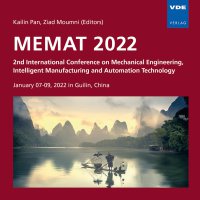Visualization and heat transfer characteristics of MWCNTs/water nanofluid in a pulsating heat pipe
Conference: MEMAT 2022 - 2nd International Conference on Mechanical Engineering, Intelligent Manufacturing and Automation Technology
01/07/2022 - 01/09/2022 at Guilin, China
Proceedings: MEMAT 2022
Pages: 6Language: englishTyp: PDF
Authors:
Liu, Miaowei; Liang, Caihang; Li, Zhenxing; Zhou, Meilan (School of Mechanical and Electrical Engineering, Guilin University of Electronic Technology, Guilin, China)
Hong, Yuxiang (School of Biological and Chemical Engineering, Guangxi University of Science and Technology, Liuzhou, China)
Abstract:
The different flow states and operation mechanisms of water-based multi-walled carbon nanotubes (MWCNTs/water) nanofluid in a pulsating heat pipe (PHP) with an inner diameter of 2 mm and a filling ratio of 40% were investigated. A visualization method was used to analyze the flow patterns and heat transfer performance of the PHP under different operating conditions, including different heating powers, inclination angles and evaporator lengths, which were the highlights of this study. The flow patterns include plug flow, bubble flow, mixed flow, annular flow and other flow patterns. The nucleation, growth, aggregation and separation processes of small bubbles were observed in the adiabatic section. The characteristics of the changes in the temperature difference between the evaporator and condenser during the start-up process and stable operation of the nanofluid solution were discussed. The results showed that within a certain range, the higher the input power, the shorter the time required for the PHP to start, and the higher temperature of the evaporator after stabilization; When the inclination angle was changed, the temperature change tendency of the condenser and evaporator was substantially the same. With a tilt angle of 90deg, the PHP starts fastest and had the best heat transfer performance; Changed the length of the evaporator while keeping the length of the condenser constant. When the length of the evaporator was equal to the condenser, the PHP would perform better.


